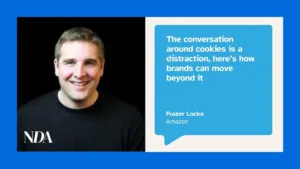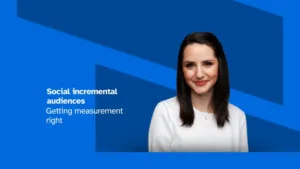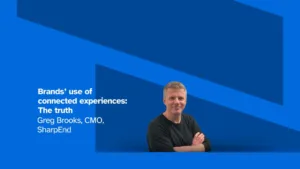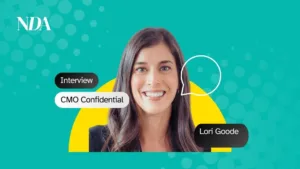Ahead of NDA’s second “legendary” Trinity Lunch to be held in Manchester, we catchup with Chris Childs, MD UK & International, Hawk.
Why did you decide to support this latest Trinity Lunch North event?
The regional market is a huge focus for us. There are some fantastic brands and agencies outside of London who are really pushing the envelope in terms of digital marketing, and we’re incredibly grateful for their support and for the partnerships we’ve built with our regional customers.
The Trinity lunch is an event which brings together some of the great and the good from across the industry, and a celebration of the great things that brands and agencies from outside of London are doing. We’re very proud to be a part of this event!
What are your clients/customer talking about right now? What are the big priorities?
Many of the conversations now are still around privacy, especially around how brands can engage with customers in a post-cookie world. In addition, though, we’re having an increasing number of conversations with brands and agencies around how they can align their digital strategies across all channels, creating a more unified conversation with their customers.
This requires the right technology to control targeting and cross-channel frequency, but also a greater understanding of how and when consumers are exposed to these channels throughout their daily journey. It’s this understanding that can then help brands to curate their omni-channel messaging in a way that is engaging but not intrusive.
Alongside this, we’re seeing a real drive from brands to minimise the carbon output from their programmatic advertising campaigns, and this is something we’re working on now with more and more of our customers. Our solution looks at the creative itself, and the strategy, before the campaign has been activated, and then we’re able to optimise in-flight to reduce carbon output further.
Are there any trends you are seeing at the moment that might be important over the next 12 months or beyond?
We’re seeing a huge lean towards privacy first data and targeting solutions. Privacy concerns and regulations like GDPR and CCPA have been shaping the digital advertising landscape, and with the death of the cookie now just a few months away, brands are having to work harder than ever to ensure they reach a relevant audience, whilst having greater control of wastage to reduce their carbon output.
These conversations will continue, as will the conversations around privacy compliant targeting methods, and a rise in more accountable measurement solutions
Is the digital marketing industry ready for the ‘cookieless’ era?
There’s been a bit of a stop start in terms of ‘the death of the cookie’. As a result, though I would say the industry is in a far better place than it was a year ago. It’s important to note, that Hawk has been ‘cookie-less’ from day one. Our platform was built around device ID data and data that can be mapped to location to optimise activity to locations that hold the most value for the advertisers we work with.
Across the market there’s also been some real innovation around contextual targeting, the importance of attention, a lean towards outcome-based advertising, and a focus on 1 to many data solutions. I feel we’re in a better place now than we were 18 months, or a year ago, and that technologies, brands and agencies should now be well prepped to embrace less intrusive, and more privacy compliant forms of measurement and targeting.
Is it becoming easier or harder to execute an omnichannel advertising campaign?
The gradual digitalisation of traditional media channels, and the ability to activate across these channels programmatically has led to huge advances in omni-channel advertising. This means advertisers can now plan, activate, and measure unified marketing campaigns across all digital channels. However, we are just at the start.
A slim percentage of TV viewers can still only be reached on linear TV, and a far higher percentage, are predominantly within walled gardens, thereby limiting omni-channel targeting options. Similarly, the percentage of out of home placements that are digitally enabled, rather than static is still less than 10% (in the UK).
So yes, it’s far easier now to execute omni channel activity but there are still limitations around reach, scale, and measurement. The good news is we’re seeing a far higher percentage of advertiser first party data which can be mapped and applied across multiple channels, as well as huge advancements in attribution & measurement tool.
All of this will help advertisers to have a more unified view across all of their digital advertising, and be more dynamic and effective in delivering omni-channel advertising campaigns.








